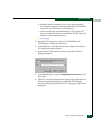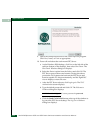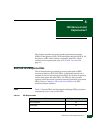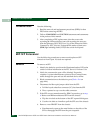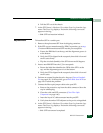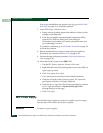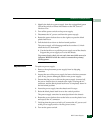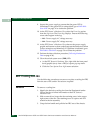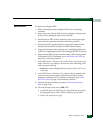
5
RRP: SFP Transceiver
5-3
FRU Removal and Replacement
b. Pull the SFP out of the chassis.
7. At the EFC Server’s Hardware View, select Event Log from the Logs
menu. The Event Log displays. Ensure the following event code
appears in the log:
— 510 - SFP hot-insertion initiated.
Replacement
To install an SFP in a switch port:
1. Remove the replacement SFP from its shipping container.
2. If the SFP was not manufactured by IBM Corporation, go to step
3. Insert an IBM-manufactured SFP into the port receptacle:
a. Ensure the IBM label is at the top, and the alignment groove is
at the bottom.
b. Verify the SFP is aligned in the receptacle, then slide it forward
until it seats firmly.
c. Flip the wire bale (handle) of the SFP downward 90 degrees.
3. Insert a non-IBM SFP into the G_Port receptacle:
a. Ensure the label that identifies the OEM of the SFP is at the
top, and the alignment groove is at the bottom.
b. Verify the SFP is aligned in the receptacle, then slide it forward
until it seats.
4. Perform an external loopback test for the port (External Loopback
Te st on page 4-31). If the test fails, go to MAP 0000: Start MAP on
page 3-6 to isolate the problem.
5. Connect the fiber-optic jumper cable to the port SFP:
a. Remove the protective cap from the cable connector. Store the
cap for safekeeping.
b. Clean the cable and SFP connectors (Clean Fiber-Optic
Components on page 4-40).
c. Insert the keyed LC cable connector into the port SFP.
d. Verify that the amber LED adjacent to the port is extinguished.
6. At the EFC Server’s Hardware View, select Event Log from the Logs
menu. The Event Log displays. Ensure the following event code
appears in the log:
— 513 - SFP hot-removal completed.





